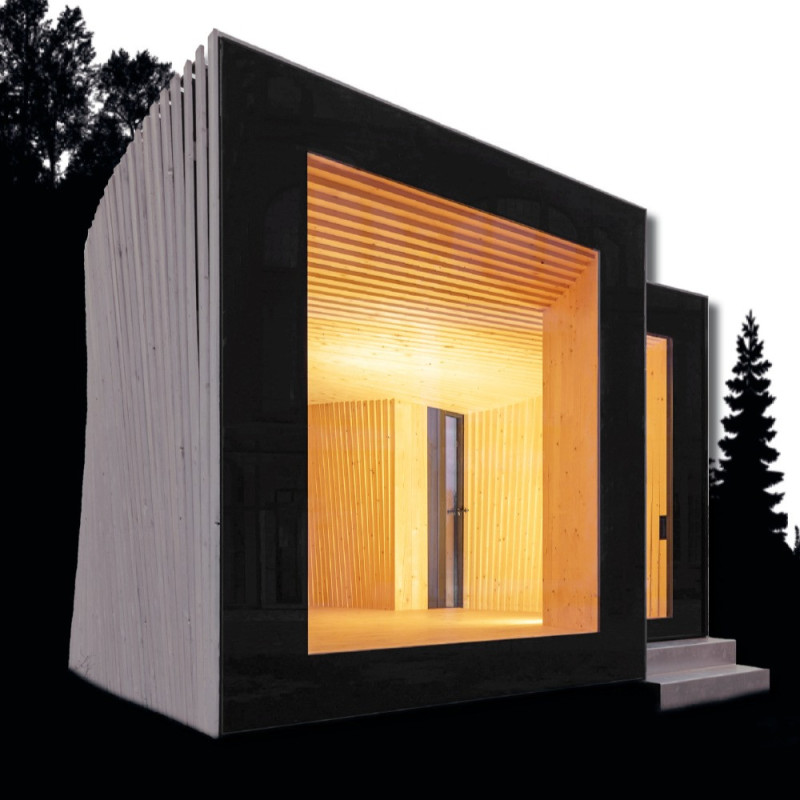5 key facts about this project
The design introduces a contemporary approach to micro-architecture, focusing on sustainability and ecological responsibility. Located in a context that values natural resources, the structure serves as a unique living space that reinterprets the concept of a log cabin. It employs advanced methods of digital design and fabrication. The overall aim is to maximize spatial efficiency while ensuring strong structural integrity.
Innovative Structure
The project features a solid timber building system that creates environmentally friendly and architecturally engaging walls. Rather than using the traditional method of stacking logs horizontally, the design incorporates staggered upright frames. This arrangement allows the vertical elements to be oriented in the direction that provides the most strength, enabling precise saw cuts without sacrificing the wood's structural support.
Sustainability Features
Strategically placed slits in the timber serve multiple purposes. They act as stress-relief cuts, preventing the wood from splitting and ensuring stability and airtightness—key considerations in log construction. Additionally, these slits also serve as dead-air chambers. This design element greatly reduces thermal conductivity and enhances insulation, contributing to the overall energy efficiency of the building.
Digital Fabrication Techniques
The construction process incorporates digital fabrication methods. This technology facilitates the creation of high-precision joints that fit the timber elements together. By doing so, the need for metal fasteners or adhesives is removed. Using a mono-material system that functions as both the structure and insulation demonstrates a clear commitment to minimizing environmental impact.
Spatial Experience
The design maintains a simple aesthetic while ensuring functionality through its form. Curved walls and ceilings optimize space. They create a welcoming atmosphere for residents, enhancing their interaction with the interior and the surrounding environment. Each element is carefully considered, resulting in a thoughtful balance of design and practicality.



















































